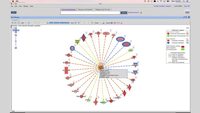QIAGEN IPA
The epididymis: Balancing the burden and responsibility of fertility
387 views
To address this knowledge gap, we used high-resolution tandem mass spectrometry and in-silico analyses to characterize proteome-wide changes in mouse sperm. We studied changes associated with their transit through the epididymis and elicited in response to capacitation stimuli, such as maturation initiated upon contact with the female reproductive tract.
In this webinar, you’ll learn about:
The unprecedented depth of >6000 proteins and 14,586 site-specific phosphorylation events across these sperm populations that we discovered using QIAGEN Ingenuity Pathway Analysis (IPA)
How sperm shed over 56% of their proteins during this process, producing a refined fertilization-competent cell
How this reduced proteomic complexity of sperm coincides with the activation of certain functions, such as sperm motility and capacitation
Key proteins and kinases we identified through selective pharmacological inhibition that regulate sperm function
The role of RHOA on mature spermatozoa to reduce the rate of acrosome reaction by about 40%
Our data represent an essential paradigm shift in our understanding of male fertility regulation. They will contribute to important advancements in developing non-hormonal male contraceptives and robust sperm selection biomarkers for infertile men.
Related videos
QIAGEN IPA
Analyze, compare and contextualize your biological data with QIAGEN IPA
Discover why QIAGEN Ingenuity Pathway Analysis (IPA) is more than just...
QIAGEN IPA
Interpreting your comparison analyses results in IPA
Learn how to view and interpret your comparison analyses results in IPA and...
QIAGEN IPA
New user training: QIAGEN Ingenuity Pathway Analysis (IPA)
New user training: Large dataset analysis and knowledge base queries using...
QIAGEN IPA
Interpreting the Results of Your Phosphoproteomics Analysis in IPA
Learn how to view and interpret your Phosphoproteomics Analysis results in...



